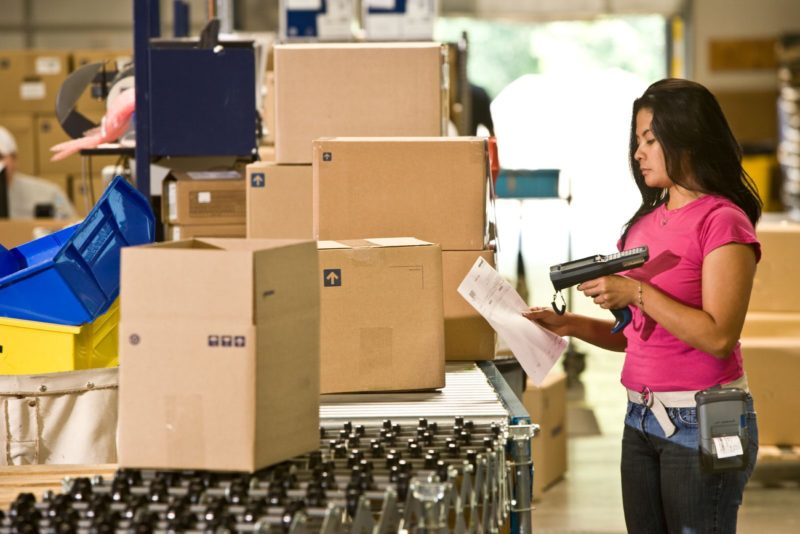Improving warehouse processes and optimizing operational efficiency requires a multifaceted approach.
In the 30 years we’ve been training and consulting wholesale and retail distributors on ways to improve their warehouse logistics, we’ve identified these top five strategies as the most effective across the board.
Emphasis on maintaining a well-kept warehouse
The way the warehouse looks says a lot about how much you value it and the employees who work there. For employees exposed to neglected warehouse facilities – whether that means disorganization, dust, clutter, dim lighting, or any other combination of qualities that ultimately indicate poor housekeeping practices – it can start to feel like management has failed to consider, much less prioritize, the level of wellness they experience in their daily work environment.
In areas where temperature extremes, humidity and dust are particularly prevalent, it is even more important to keep the safety and comfort of your employees in mind by maintaining a more organized, well-ventilated (or heated) warehouse. Moreover, there is often a hidden cost to a messy warehouse, as they almost always affect productivity and inventory control.
One of the easiest ways to make an improvement is to examine your traffic patterns. How are items picked and put away, and how is stock replenished? How well are you utilizing vertical space? Once you complete a traffic analysis, group products based on the frequency they are touched, creating efficiencies in how products flow in and out of the warehouse.
Worker incentives
If you consider employee turnover a cost of doing business and are not using pay incentives in your warehouse, you might want to reconsider. The costs of turnover are high, with some estimates pegging it to be as much as $10,000 per employee to cover , training and ramp-up; this amount doesn’t include recruiting costs. Or perhaps you are a proponent of teamwork, believing that individual rewards are not necessary.
While it is true that most managers espouse teamwork, individual rewards can often serve as more of a motivation for employees. You can design and communicate these incentives in many ways, such as rewards for least picking errors, the most picks per hour, most on-time shipments, even safety records. Really, any metric tied to customer satisfaction or employee fulfillment can deliver a measurable ROI for your business.
Bottom line: identify and recognize your top performers, then set benchmarks based on the high standards those individuals have demonstrated. In practice, this will serve as both a motivation and encouraging continual performance improvement.
Fair standards
Speaking of standards, it is important to factor in the fairness of the benchmarks you have identified as they apply to both your employees and the organization as a whole – and make sure it is evenly distributed in acceptable levels on both sides of the equation.
Warehouse tasks are often predictable, meaning they are easy to measure. To establish key performance indicators (KPIs), look at past activities and data (if available) to create goals such as lines or pallets per hour. Talk to employees to gain an understanding of the effort required to achieve a goal and get their buy-in as you move toward a more methodical system of tracking individual performance.
Training
Your employees are a valuable investment. Set them up for success by providing them with the most thorough training possible. Training time will pay off in the long run, as a business that empowers everyone is one where teamwork and trust will flourish.
Investment
In addition to investing time in creating a more organized and efficient warehouse, there are tools that can quickly turn it from an operational expenditure into a profit center. Deploying a good warehouse management system (WMS) is an obvious way to upgrade, particularly if your operation is still paper-based. The right type of pallet racks and other appropriate storage approaches as well as material handling equipment are another obvious choice, simply because when used properly, they save a lot of space and enable a more efficient traffic flow.
Finally, reduce the physical burden on your employees as much as possible by taking inventory of the material handling tools they use in the warehouse and then evaluate which of those need to be replaced with technologies that can handle the (literal) heavy lifting. Reduce the occurrence of task-related injury in your warehouse through the implementation of cost-effective solutions, such as automated or semi-automated equipment. By doing so, your company also stands to benefit from higher retention rate in its warehouse workforce, and significant, positive impact on your business’ bottom line.
So how much of your annual budget should you invest in the warehouse? It is not an easy question to answer, because every facility is different. You might glean the information you need from the 2018 Warehouse and Distribution Center Equipment Survey conducted by Peerless Research Group on behalf of Logistics Management and Modern Materials Handling. While many of the respondents are larger distribution centers and warehouses, the overall data shows a positive trend in investment spending, particularly with businesses in the e-commerce sector.

